
Fosbury Flopped To High Jump Glory
It was initially called a flop, but in reality, Dick Fosbury had a huge hit.
The Oregon State high jumper became a star in 1968, riding his revolutionary style all the way to an Olympic gold medal and being recognized as one of the world’s best-known athletes.
The sensation was a new style of clearing the high jump bar that he developed in 1963 as a high school sophomore. Instead of using a straddle or roll technique, Fosbury went over the bar backwards. In 1964 his hometown newspaper, the Medford (Oregon) Mail Tribune, captioned a photo of him as “Fosbury Flops Over the Bar” and a story described his technique as like “a fish flopping into a boat.”
The radical style wasn’t an immediate success with everyone. Fosbury’s coach at Oregon State – USTFCCCA Hall of Famer Berny Wagner – had him working on a conventional method in practice, while allowing the flop in freshman meets. That changed in Fosbury’s sophomore year of 1967 when he opened up by clearing a school record 6-10 (2.08m).
“After the meet, Berny came up to me and said, ‘That’s enough,’” Fosbury recalled to Brad Fuqua of the Corvallis (Oregon) Gazette-Times in 2014. “That was the end of Plan A, on to Plan B.”
But it was in 1968 that Fosbury started to soar, both literally and in popularity. He was on the cover of Track & Field News in February when he first cleared 7-0 (2.13m) and in March, he won the NCAA Indoor title, tying the meet record of 7-0. In June, Fosbury won the NCAA Outdoor with a meet record 7-2¼ (2.19m), improving the previous meet record of 7-2 (2.18m) set by Boston U’s John Thomas in 1961.
Then came Mexico City and true world debut of the Fosbury Flop. The crowd of 80,000 was captivated, loudly cheering Fosbury’s clearances. “Only a triple somersault off a flying trapeze with no net below could be more thrilling,” one German reporter told Jon Hendershott of Track & Field News.
Fosbury, who had raised his PR to 7-3 (2.21m) at the Final Olympic Trials, had first-attempt clearances through a PR 2.22m (7-3¼), his third Olympic record height. He and fellow American Ed Caruthers – 1967 NCAA runner-up for Arizona – were the only ones left as the bar went to 2.24m (7-4¼) and the marathon runners were entering the stadium for their finish.
Only Fosbury was able to clear it – surpassing the American record of 2.23m (7-3¾) set in 1960 by Thomas. Fellow Oregonian Kenny Moore had just entered the stadium as the first American marathoner and “threw his arms in the air, danced a jig step and shouted congratulations to Dick. The crowd roared with delight at the antics of the two young Americans,” wrote Hendershott.
Fosbury, who missed three attempts at a world record 2.29m (7-6), would never jump as high again. He repeated as NCAA champ in 1969, raising the meet record to 7-2½ (2.20m).
Today it is estimated that 99% of high jumpers worldwide use the flop style.
The NCAA and collegiate track & field will mark a momentous milestone in the spring of 2021 -- the 100th anniversary of the NCAA Championships and with that, the NCAA Track & Field Championships. In June 1921, the University of Chicago hosted the first track & field championships in NCAA history.
This point can’t be emphasized enough: Not only was the event the first for NCAA track & field, but the first championships for any sport under the sponsorship of the NCAA.
To celebrate, over each of the next 365 days, the U.S. Track & Field and Cross Country Coaches Association (USTFCCCA) will celebrate moments, student-athletes, and coaches that have made a century’s worth of championships special. From humble beginnings to important historical milestones to the modern-day, collegiate track & field has evolved with the American society.
The 2021 edition of the NCAA Division I Outdoor Track & Field Championships begin with preliminary round action on May 27-29 in Jacksonville, Fla., and College Station, Texas. The championships final site and culmination of the celebration is slated for June 9-12, 2021 at the newly rebuilt Hayward Field in Eugene, Ore.

Lawson Completed “Jesse Owens Triple” In 2016
Jarrion Lawson won the 100, 200 and long jump at the 2016 NCAA Division I Outdoor Track & Field Championships.

Plab Reached Lofty Heights In NCAA HJ
Darrin Plab won back-to-back HJ titles at the NCAA DI Outdoor T&F Championships in 1991 & 1992. Plab cleared 2.34m (7-8) in 1992 & tied the 2nd best bar in meet history.
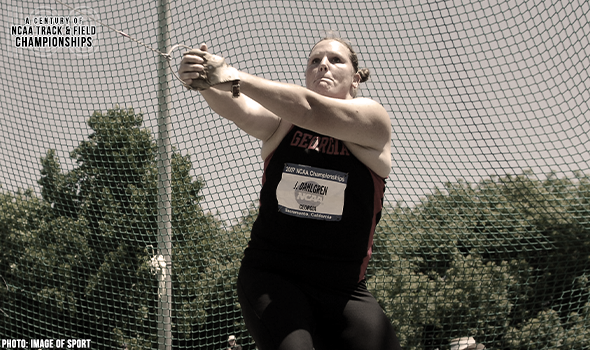
Dahlgren Won Back-To-Back HT Titles, Set MR
Jenny Dahlgren won back-to-back hammer titles at the NCAA DI Outdoor T&F Championships in 2006 & 2007. Dahlgren set a MR of 70.72m (232-0) in that second year.

Peoples Made History One Lap At A Time
Maurice Peoples won the 440-yard dash in 1973 & then really turned up the heat. Peoples split 43.4 on the Sun Devils’ mile relay team that finished third in the final.
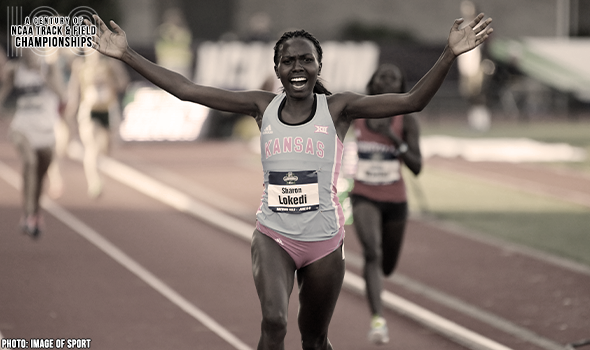
KU’s Lokedi Set 10K MR In 2018
Sharon Lokedi won the 10K at the 2018 NCAA DI Outdoor T&F Championships in a meet-record 32:09.20. Lokedi led five other women under the old final-site best, too.
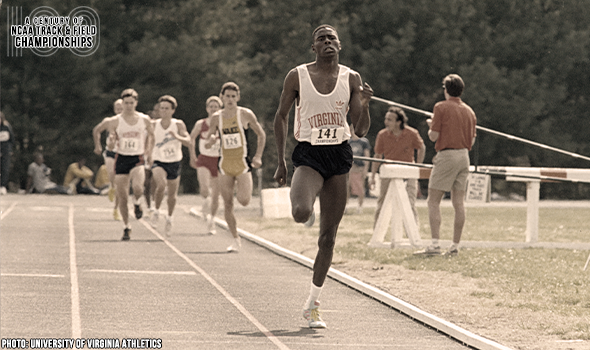
Can Ereng Kick It? Yes, He Can!
Paul Ereng won back-to-back 800-meter titles at the NCAA DI Outdoor T&F Championships in 1988 & 1989. Ereng is still the current indoor record holder in the event.
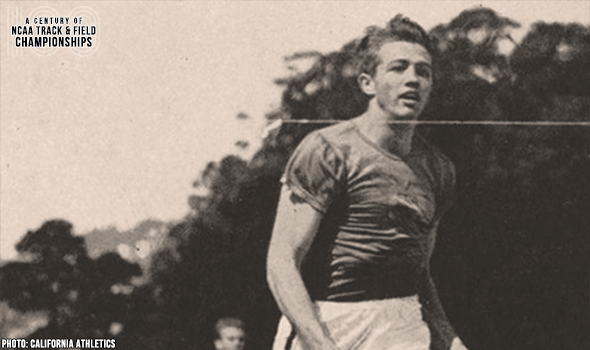
“California Comet” Doubled Up At NCAAs
Hal Davis completed the 100-200 double twice at the NCAA Outdoor Track & Field Championships.
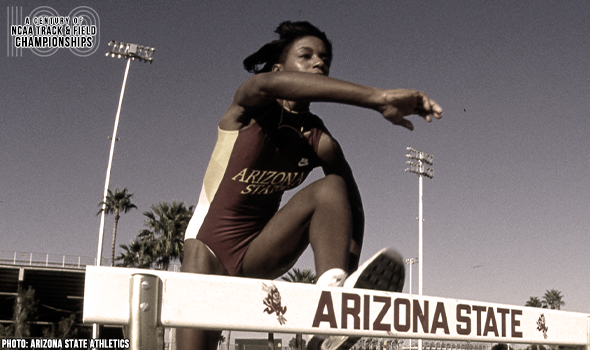
Tolbert Clocked 100H Meet Record In 1988
Lynda Tolbert won two career 100H titles at the NCAA DI Outdoor T&F Championships in 1988 & 1990. When Tolbert won in 1988, she set a MR of 12.82.
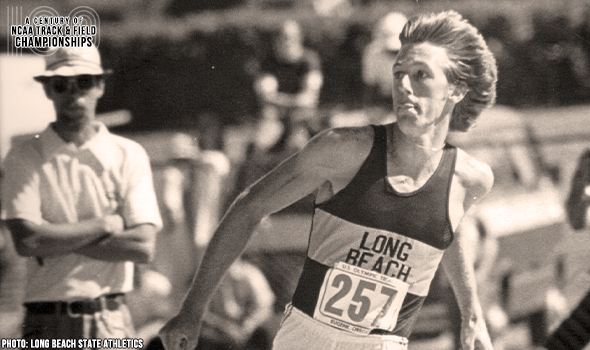
Dwight Stones Set High Jump WR In 1976
Dwight Stones set a world record in the high jump of 2.31m (7-7) at the 1976 NCAA DI Outdoor T&F Championships. Stones also raised the MR by more than 3 inches!
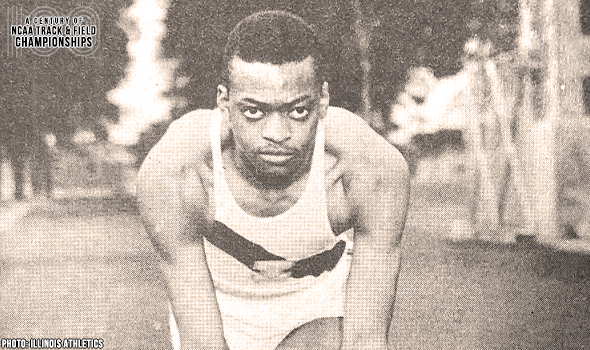
Walker Completed Only Hurdling Triple
George Walker is the only athlete in NCAA Outdoor T&F Championships history to win all three hurdling events: 110H (120H), 400H & now-defunct 220H.

